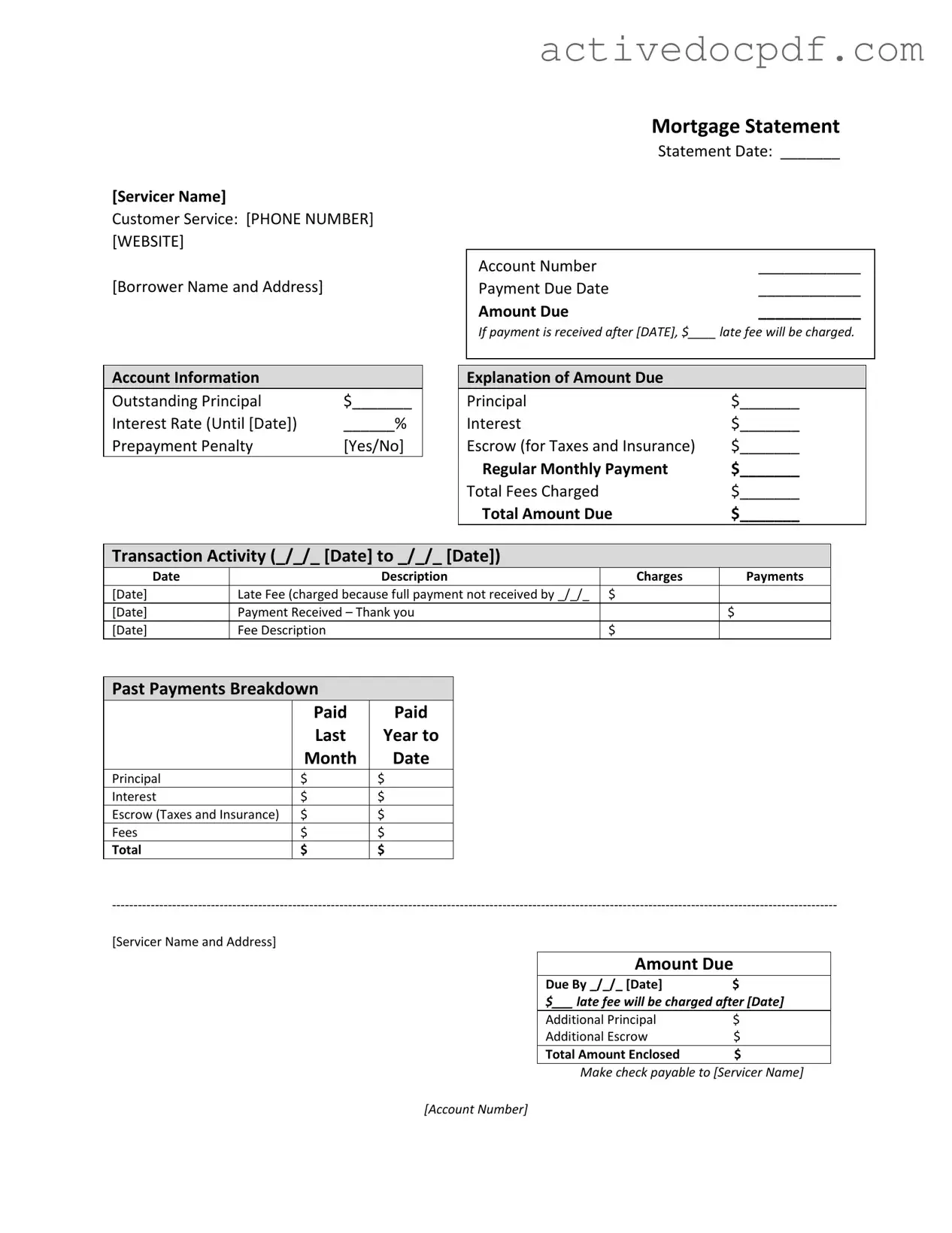What is a Mortgage Statement?
A Mortgage Statement is a document provided by your mortgage servicer that outlines important information about your mortgage loan. It includes details such as the outstanding principal balance, interest rate, payment due date, and the amount you owe for the current billing cycle. This statement serves as a helpful tool for managing your mortgage payments and understanding your financial obligations.
Your Mortgage Statement contains several key pieces of information, including:
-
Account number
-
Payment due date
-
Outstanding principal balance
-
Interest rate
-
Escrow amounts for taxes and insurance
-
Total amount due, including any fees
-
Transaction activity, showing recent payments and charges
This information is crucial for tracking your mortgage and ensuring timely payments.
What happens if I miss a payment?
If you miss a payment, your Mortgage Statement will reflect a late fee, which is typically charged if the payment is not received by a specified date. Additionally, missing payments can lead to serious consequences, including potential foreclosure. It is important to address missed payments as soon as possible to avoid further complications.
What is a late fee, and how is it calculated?
A late fee is a charge that may be applied if your mortgage payment is not received by the due date. The amount of the late fee is typically specified on your Mortgage Statement and is calculated based on the terms of your loan agreement. It is essential to review your statement for the exact amount and conditions related to late fees.
What should I do if I cannot make my mortgage payment?
If you are experiencing financial difficulty and are unable to make your mortgage payment, it is crucial to reach out to your mortgage servicer as soon as possible. They may offer options such as mortgage counseling or assistance programs to help you navigate your situation. Taking action early can help prevent further financial distress.
What are partial payments, and how are they handled?
Partial payments are amounts that are less than the total mortgage payment due. Your Mortgage Statement will indicate that any partial payments are not applied directly to your mortgage balance. Instead, these funds are held in a separate suspense account until you pay the remaining balance. Once the full payment is made, the funds will then be applied to your mortgage.
How can I make my mortgage payment?
You can typically make your mortgage payment in several ways, including online through your servicer's website, by mail with a check, or through automatic bank deductions. Your Mortgage Statement will provide specific instructions on how to make your payment, including the address for mailing checks and any online payment options available.
What is an escrow account, and why is it important?
An escrow account is a separate account set up by your mortgage servicer to hold funds for property taxes and insurance premiums. Your Mortgage Statement will detail the escrow amounts included in your monthly payment. This account is important because it ensures that these essential expenses are paid on time, helping to protect your investment in your home.
What does it mean if I see a delinquency notice on my Mortgage Statement?
A delinquency notice indicates that you are behind on your mortgage payments. Your Mortgage Statement will specify how many days you are delinquent and the total amount required to bring your loan current. It is vital to address this issue promptly to avoid additional fees and the risk of foreclosure.
Your Mortgage Statement will provide contact information for your mortgage servicer, including a customer service phone number and website. If you have questions or need assistance, do not hesitate to reach out to them. They are there to help you understand your mortgage and provide support as needed.
